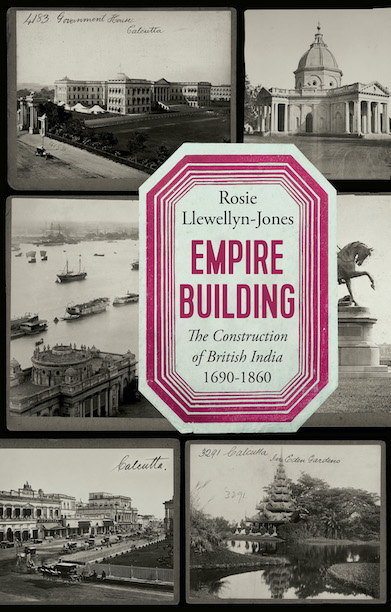
Dissolved Monopoly’s Legacy Hinges on How India Honors Its Political Architecture
Reviewed by Kyle Pakka
Empire Building: The Construction of British India, 1690–1860
Rosie Llewellyn-Jones. Hurst Publishers, 2023.
"For better or worse, modern India has been shaped by Britain, which has left numerous reminders of its rule. It is to India’s credit and often advantage that she has maintained and developed the institutions and infrastructure put in place by a small group of foreign merchants who arrived on her shores four centuries ago."
From the first fortified trading post on the Hooghly River, founded in 1690 in what became Calcutta, present-day Kolkata, in northeastern India, historian Rosie Llewellyn-Jones tracks the physical changes wrought by the English East India Company (EIC)—roads, railways and municipal buildings—up to 1860 when the company dissolved. As the title makes clear, the book focuses on infrastructure, especially of the Bengal Presidency, an administrative province that later included northern India up to the Khyber Pass. EIC agents first began ingratiating themselves to the hierarchy established by Aurangzeb, the last great emperor of India’s Timurid dynasty. But when the sultanate fragmented after his death in 1707, the company grew more assertive. By 1764 the British captured Bengal after having bested local armies at the fortified town of Buxar, in present-day Bihar. The resulting Treaty of Allahabad a year later yielded Company, and ultimately British government, rule over India. Over time, the EIC evolved from employing merchants to soldiers to administrators, and their buildings mirrored changing European social movements. The Enlightenment of the 18th-century prompted projects such as colleges, hospitals and libraries. In the book Llewellyn-Jones moves the reader briskly through this period, enlivening the narrative with portraits of the leading players in the drama that unfolded between the fall of the sultanate and the rise of modern India.
You may also be interested in...

Children's Book Offers Lessons for Any Age
Change is hard, and there are few bigger changes to contend with than that of moving thousands of kilometers away to a different country.
Dubai Neighborhood Paves Way for Urban Design Preservation
Architect Peter Jackson and social geographer Anne Coles examine the origins, flowering, decline and restoration of the famed Dubai wind towers.
In the Aftermath of Rome's Collapse, These Communities Shaped the Mediterranean
Three regions of the post-Roman Mediterranean, from 400 CE to 1000 CE—the Latin West, Byzantium and the early Islamic world—are the focus of this work.